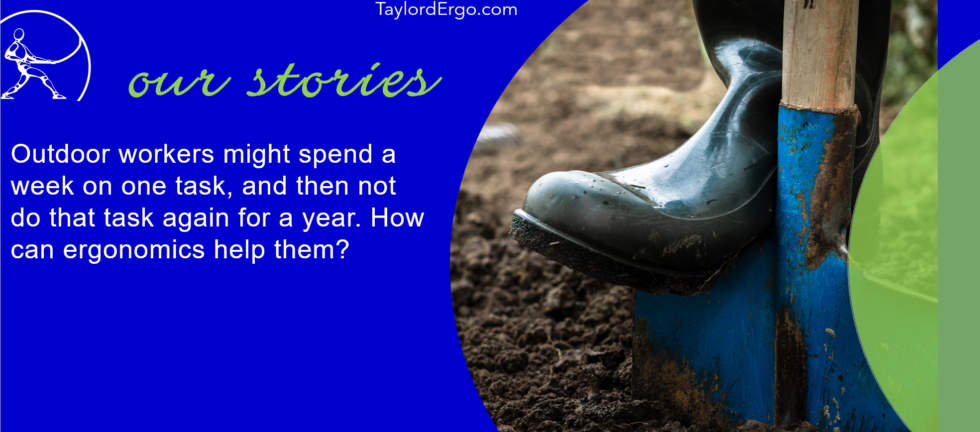Municipalities encompass a broad variety of positions, from police to office work, and from long-term care to Zamboni driver. Today, let’s focus specifically on public works. Public works employees perform a wide range of tasks that vary day to day and season to season, making ergonomics planning particularly challenging. This article explores these unique challenges and offers practical solutions for safety and human resources professionals.
Real-Life Examples and Case Studies
Consider a snowplow driver who might work for 12 hours straight during a snowstorm but not at all between snow events. Or a worker dealing with fallen trees after a windstorm, using chainsaws and chippers for cleanup. At this time of year, most outdoor workers spend all day on a mower, or using a trimmer. These examples highlight the variability and unpredictability of public works tasks, which must be taken into account when describing job demands.
Engaging with Workers for Data Collection
To effectively observe and analyze these jobs, engaging with multiple workers is essential. Workers can often mock-up irregular tasks to provide a clearer understanding of the job. For instance, a group of workers can demonstrate how they move a downed tree, or change the blade on a snowplow. When the actual tasks occur, data collection runs smoother because the ergonomist understands the job.
Biggest Ergonomics Challenges
In a production environment, task frequency and duration are predictable. However, in municipal public works, the answer to “How often…?” is almost always, “It depends.” This unpredictability makes it difficult to describe the demands for an outsider, assess injury risks, and justify interventions. Building rapport with managers, supervisors, and workers is crucial to understanding what is “normal” and “worst case.” Knowing what questions to ask and where to dig for data, is also key.
Practical Tips and Best Practices
Ask Questions about All Seasons: Ensure that all tasks are considered across all four seasons. Workers might focus on recent tasks, so it’s essential to survey at different times of the year.
Observe Throughout the Year: Study the job throughout the year to get an accurate picture of the demands. A task observed in the fall may look very different in winter or spring.
Flexible Interventions: Seek interventions that can be used for multiple tasks. For example, a harness that diverts the weight of a grass trimmer from hands to shoulders could also be compatible with pole saws and hedge trimmers.
Next Steps and Future Plans
A few years ago, we spent hundreds of hours with outdoor workers at various municipalities, identifying and reporting over a hundred unique ergonomic work strategies. Based on these studies, we created a 2-hour hands-on training session, which has received great feedback. We are now developing “coaching plans” for supervisors and safety professionals to use, which include 5-minute lessons on specific ergonomic strategies. Stay tuned for more information on these plans.
Conclusion
Understanding and addressing the unique ergonomics challenges in municipal public works is essential for ensuring the safety and efficiency of workers. By engaging with employees, considering seasonal variations, and implementing flexible ergonomic interventions, safety and human resources professionals can make a significant impact.


